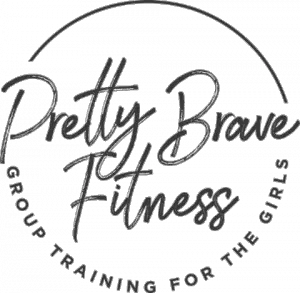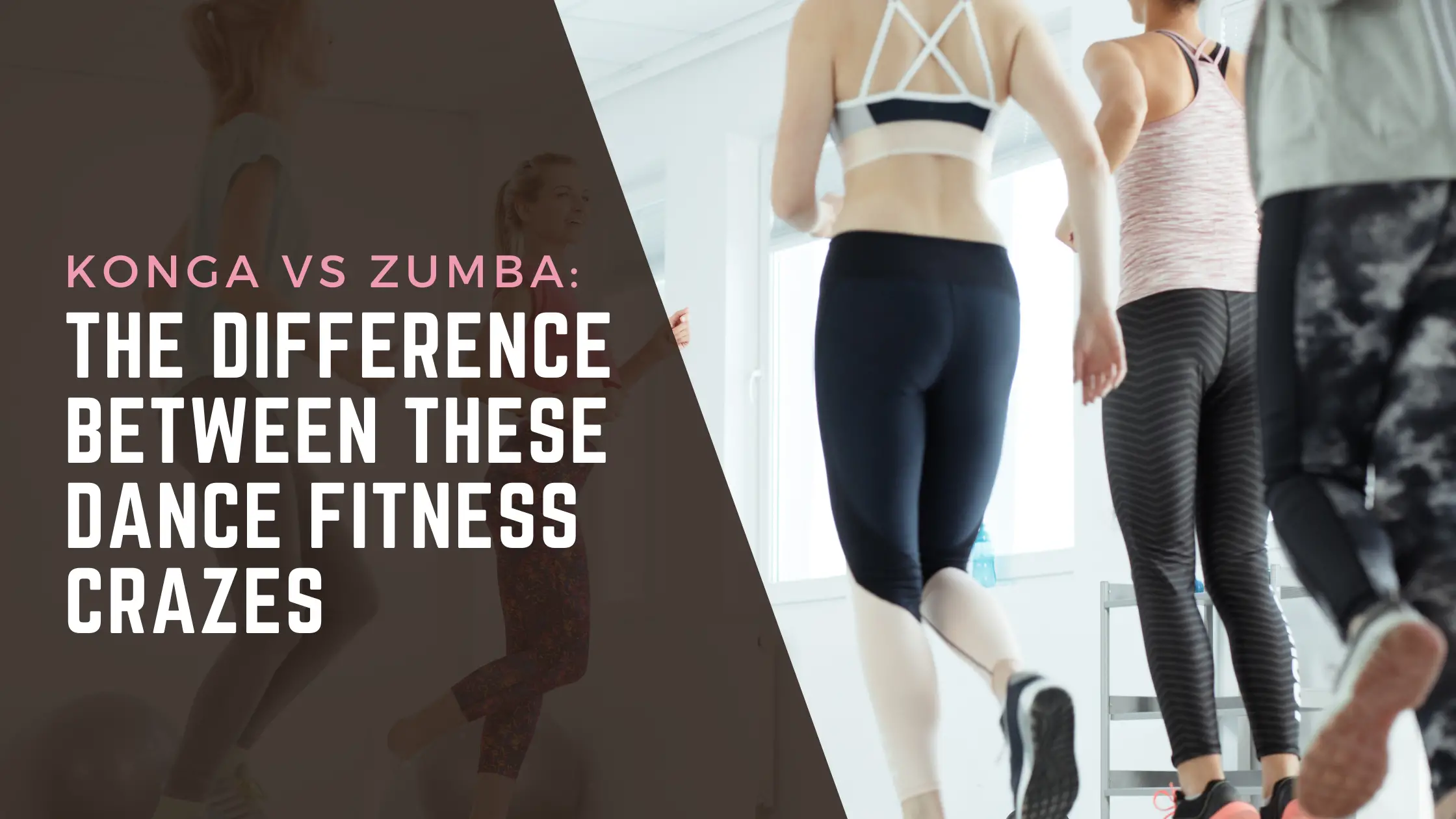If you’re looking to boost your health and fitness but don’t have much motivation to jog or lift weights, why not try a fun and effective dance fitness class? These upbeat classes are great for burning fat, boosting metabolism, and improving full-body health. However, with many high-intensity dance workouts available today, it can be tricky to tell which one is the best option for you.
Konga and Zumba are the two most popular dance fitness options at the moment. Zumba has been in the spotlight for a few years now, while Konga is a newer style of dance fitness class, and there are many differences between the two.
Zumba is a Latin-inspired dance workout that integrates interval training. A Zumba routine progresses between high-intensity and low-intensity dance moves, alternating fast and slow rhythms to improve cardiovascular fitness. Konga is more diverse, integrating Pilates, cardio, boxing, and other fitness techniques in each class, set to a wider variety of music.
When choosing the right fitness class for you, you have to consider the intensity level that your body can sustain. Additionally, you have to take into consideration how the workout will help you achieve your fitness goals. Also, is it easy to follow? How many calories can it burn? These are just some of the questions that can guide you in the right direction.
So, in a battle of Konga vs Zumba, how do you pick the better workout for you? To help you decide, we’ve rounded up the key differences between the two. Read on to gain a better understanding of what these dance fitness crazes have to offer.
What is Konga fitness?
Konga is an easy-to-follow, high-intensity workout. It’s a fusion of cardio, boxing, dance, and body sculpting set to the hottest upbeat music. Being an all-in-one workout, it tones the body while burning calories at the same time. Konga also causes the body to release endorphins. The high-energy dance routines help improve your mood and make you sweat while also providing a fun and social experience.
Konga workouts are based around only four simple moves per track, making it easier for beginners (and more coordination-challenged participants) to get the hang of it. There are also lower-intensity alternatives for each class, meaning nobody misses out due to their fitness level or physical limitations.
Typically, a Konga class begins with gentle routines, including stretching and shoulder rolls that can warm up the joints and muscles. The pace then picks up with more intense music and makes you use your whole body, jumping high and punching hard.
Who invented Konga fitness?
Konga fitness was developed by Tara Simich, one of Australia’s leading fitness gurus. She observed a gap in the group fitness market: other dance fitness classes like Zumba used more complex moves that were difficult for beginners to follow. Tara wanted to create an alternative that was simple to follow, highly effective and delivered results quickly.
This observation gave birth to the Konga all-in-one dance workout. When Konga went viral, Tara created four other programs to enhance the fitness experience: Tyga, Jagua, Burn, and Vypa. Tara is now the founder of the global exercise and movement-to-music company called The Jungle Body.
How is Konga different to Zumba?
Both Konga and Zumba feel more like a dance party than a workout because they are set to the hottest music. However, Konga differs from Zumba in terms of the type of music and the movements. While Zumba lets you groove to the beats of Latin and international music, Konga has no Latin influence. In fact, at least 70% of Konga tracks include afrobeat, hip hop, electronic, and old-school music.
For Zumba, at least 70% of its music is Latin-inspired. Zumba songs are also not modified or remixed to suit the routines: they are simply songs in their original formats played one after the other. Created by Colombian dancer and choreographer Alberto ‘Beto’ Pérez during the 1990s, Zumba got its Latin roots from Cali, Colombia.
In terms of movements, with Latin American dance as inspiration for Zumba, many of its basic moves are drawn from the more aerobic elements of Latin dance styles. Zumba choreography includes soca, samba, mambo, salsa, merengue, hip-hop, squats, and lunges. The moves can be complex and overwhelming at first, but they can be learned with practice.
On the other hand, Konga’s beat-driven moves may include boxing, cardio, dance, hip hop, pop, Latin, jazz, ballet, Pilates, and even muscle toning exercises. Only four moves must be learned for each routine, which makes it very easy to follow right from the beginning. The diversity of movements is greater, as well as the music styles, but it’s all kept simple and accessible for participants of all fitness levels.
Zumba vs Konga: Who Is it Suitable For?
Konga and Zumba can be fun for anyone, even if you can’t dance well. The two programs are also suitable for all ages and fitness levels, and classes can be modified for specific audiences (e.g. kids or seniors). Nevertheless, checking with your doctor before you start with any of these dance workouts is important. It is always best to confirm that you are medically and physically fit to participate.
Konga-LO, a specialised low-impact cardio program, was also created especially for the disabled, seniors, and those with muscle and joint issues. This makes Konga even more suitable for people of all ages and abilities. Similarly, Zumba has lower-impact versions of the program, Zumba Gold or Aqua Zumba.
Zumba vs Konga: Which Is Easier For Beginners?
Konga needs no specialised moves to participate – as a matter of fact, good coordination or rhythm is not even a prerequisite. Instead, this workout is specifically designed for beginners who love working out with loud music.
Konga is often held in darker rooms, allowing people to participate without feeling conscious. The program starts with light movements, which gradually become fast-paced. With only four key moves for each routine, Konga is easier for beginners to follow and master.
Meanwhile, Zumba may require a bit more coordination because of the more advanced choreography for each song. Given its Latin origins, the movements are related to Latin dance moves, which may not always be easy for everyone.
Zumba vs Konga: Which Burns More Calories?
According to research, about 400-700 calories are burned for every 60-minute Konga class. With Zumba, women in an average weight range can burn between 350 and 650 calories after an hour-long full-intensity workout.
This means both Zumba and Kinda can be effective for weight loss, depending on the individual’s calorie intake and overall exercise program.
The number of calories burned during a fitness class is not the same for everyone, though. It is influenced by so many things like body type, weight, genetics, fitness level, and muscle content of the individual. Also taken into consideration is the composition and intensity level of the workout – so individual effort and any lower-intensity modifications to the movements will impact the calories burned.
Can you do a Konga workout online?
You can purchase a Konga class online to do at home, on your own or with friends and family. A 50-minute Konga workout only requires a mat, a towel, water, and a bit of enthusiasm!
However, as you only receive one video workout, you may get tired of doing the same routine day after day.
If you enjoy a fun and high-intensity workout, why not find out what gyms near you have to offer? Local businesses like Pretty Brave Fitness have fantastic upbeat and full-body workouts great for weight loss, toning and energy.
Related Questions
Do dance workouts work?
Dance workouts are a fresh way to stay active, helping you to:
- burn calories
- lose weight
- tone the body
- increase muscle strength
- strengthen the immune system
- decrease the risk of certain chronic conditions like heart disease
- enhance body rhythm and coordination
- boost mood
It is important to note that the effectiveness of a dance workout may be affected by different factors. These include the consistency of the activity, the amount of time spent doing it, the intensity of the dance workout, and caloric intake.
Which dance is best for weight loss?
The intensity level of a dance style will help determine how many calories you can burn. Dance styles with fast movements are generally more intense than slower ones, and they can be better options if the purpose of a dance workout is to lose weight.
Konga, Zumba, salsa, belly dance, hip hop, aerobics, and pole dance are among the most common high-intensity dance workouts used as part of a weight-loss journey. Each one has advantages and disadvantages depending on the physical condition or fitness level of the individual. It’s always good to do proper research first before deciding to stick to one particular workout style and continue to introduce variety into your fitness routine.
Disclaimer:
This article is published for general informational purposes only. It does not constitute medical advice and does not take into consideration your individual circumstances, medical conditions or abilities. Always consult a medical professional before beginning any program of exercise. A fitness industry professional can provide personalised advice to suit your needs.

